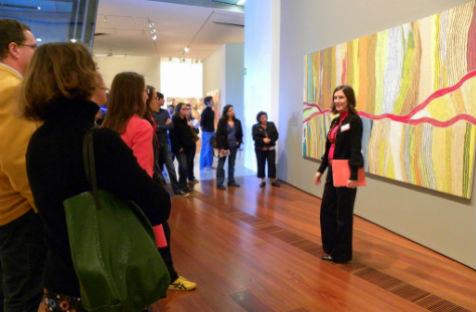The Australia Council chairman makes a plea for valuing guides and their relationship with the public, not just collections.
Many thousand of Australians give their time as guides to our nation’s visual treasures and temporary exhibitions as they are presented in many of our key institutions all over the country.
Too often, there is a tendency in the sector to focus on building, conserving and promoting the collection whilst maintaining and expanding the gallery and its facilities. This inevitably requires struggling with tight budgets and managing government, sponsorship and philanthropic relationships.
My experience at the NGA in Canberra, at the NGV Melbourne and the MCA in Sydney, is that while all that is going on, it is the relationship with the public that is paramount. It is of the utmost importance to keep the gallery and museum public engaged, excited, informed, entertained, eager even thrilled. It is the guides that are at the forefront of that responsibility by providing visitors with an enjoyable, illuminating and memorable cultural experience.
The value of a collection is diminished if no one comes to see it. But it is also diminished if they derive no pleasure or benefit when they do visit.
A collection, individual artwork or exhibition will be of great interest to artists, art academics and others with specialised knowledge, but galleries and their collections are in the main publicly funded and for the public’s benefit.
Guides make sure that visitors, sometimes known as taxpayers, have the opportunity to maximize the enjoyment of their ‘investment’, and to have that thing called ‘access’, which policy makers are always keen to promote as a major objective of cultural policy.
Guides are integral to the public’s engagement with collections. A guide can take a visit beyond just access to actual participation by being an interpreter, educator, companion, and de-mystifier.
Some time ago, I remember hearing for the first time in the US the term ‘docent’, which is used for gallery and museum guides. I had not a clue what the word meant. On subsequent visits, I have always enjoyed reading the signs in art museum foyers, which describe the role.
Others know of my interest and I was informed recently of one that read:
‘Docents at the Georgia O’Keeffe Museum (in Santa Fe) contribute time, energy and ideas to make the art within the exhibition accessible, understandable and rewarding to visitors of the Museum. By creating a dialogue with the visitors about the works of art, docents stimulate observation, speculation, possibility and connection.’
I think that is perfectly put. The word ‘docent’ derives from the Latin docere, to teach, which is very apt. The role is a highly valued position and the work of volunteer guides should be greatly appreciated.





